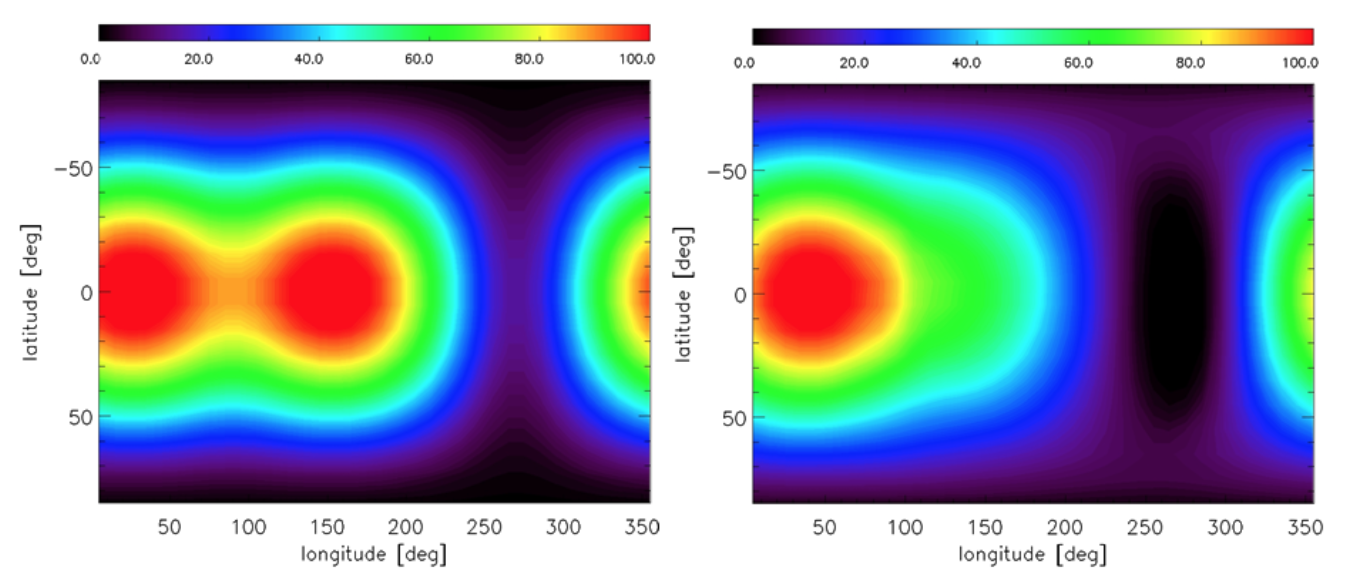2017
The main focus of our research group is space plasma physics, we study plasma processes in our Solar System through spacecraft observations and modeling. We are involved in numerous space missions at all stages from design to data exploitation in collaboration with the Space Technology research group. The Rosetta mission (2004/2014-2016) has provided us with a huge amount of data about the cometary plasma. In 2017 we took farewell of the Cassini spacecraft that orbited Saturn for 13 years, and started to prepare for the next mission to a giant planet and its moons: the JUICE spacecraft, which targets Jupiter and its satellites. We use previous solar mission results to develop reliable solar wind prediction tools both in house and in international collaboration as part of the Europlanet Planetary Space Weather Services team.
Modeling dust delivery from Enceladus to the moons of Saturn. — The active geysers in the south polar region of Enceladus are sources of dust particles that sustain the vast E-ring of Saturn, extending out beyond Titan at 20 Saturn radii. The dynamics of the small micron and submicron particles escaping from Enceladus is primarily set by Saturn’s gravity, plasma drag, radiation pressure and electromagnetic forces. We developed simulations to follow different sized (0.1-5 micron) dust particles from Enceladus till their ultimate demise: being ejected from Saturn’s magnetosphere, or hitting one of its moons. We determined the expected size, speed and spatial distributions of the impacting particles and identify their predicted anisotropies bombarding the leading/trailing hemispheres of the moons, possibly offering an explanation for their observed brightness features (Fig. 1).
Cometary Physics. — We calculated the diamagnetic cavity boundary distance around Comet 67P/Churyumov-Gerasimenko using various methods. We found that the global outgassing rate determines the position of the boundary with local pressure variations being suppressed, while the rapid changes in the external solar wind pressure at the position of the comet can explain the intermittent nature of the cavity crossing events (Fig. 2).
Interplanetary space. — The heliospheric magnetic field was investigated by the analysis of near-earth interplanetary measurements. It was shown, that structures recurrent with the solar rotation are persistent for a long time, both in the polarity (magnetic sectors) and the magnitude of the magnetic field. The origin of those structures are different, and also, the rotation period of the magnetic field enhancements, associated to Corotating Interaction Regions is slightly smaller than that of the magnetic sectors. The different rotation period suggests a major re-arrangement of the solar magnetic field during the declining phase of the solar cycles.

Figure 1. The color plates show the E ring dust deposition map on the surface of moons Enceladus (left) and Titan (right). The longitude is measured from the anti-Saturnian direction and the 90 degrees marks the leading side of the moons. The modeled dust deposition rates are: 3400 kg/day for Enceladus and 460 kg/day for Titan. (Other moons, Mimas, Tethys, Dione and Rhea were modeled also.)

Figure 2. Calculated cavity distance in July and August of 2015. The red signs mark the observed cavity crossing events, the black line is the distance of the Rosetta spacecraft from the cometary nucleus, and the blue line is the calculated distance of the cavity boundary from the nucleus.
Suprathermal ions in the heliosphere. — By comparing the intensity peaks observed in the fluxes of suprathermal He, C, O, and Fe ions during the last two solar maxima we found marked differences and suggested that these ions were accelerated to suprathermal energies under different conditions in the solar corona.



